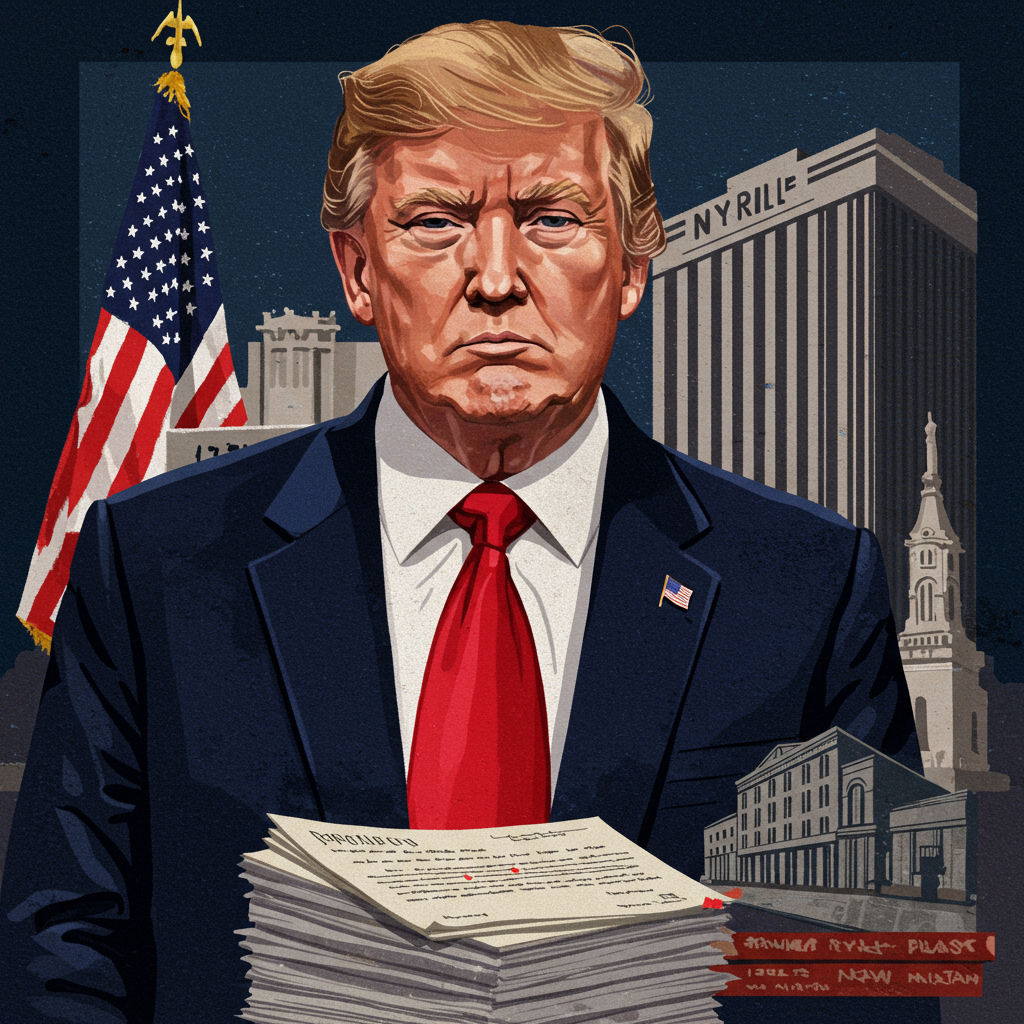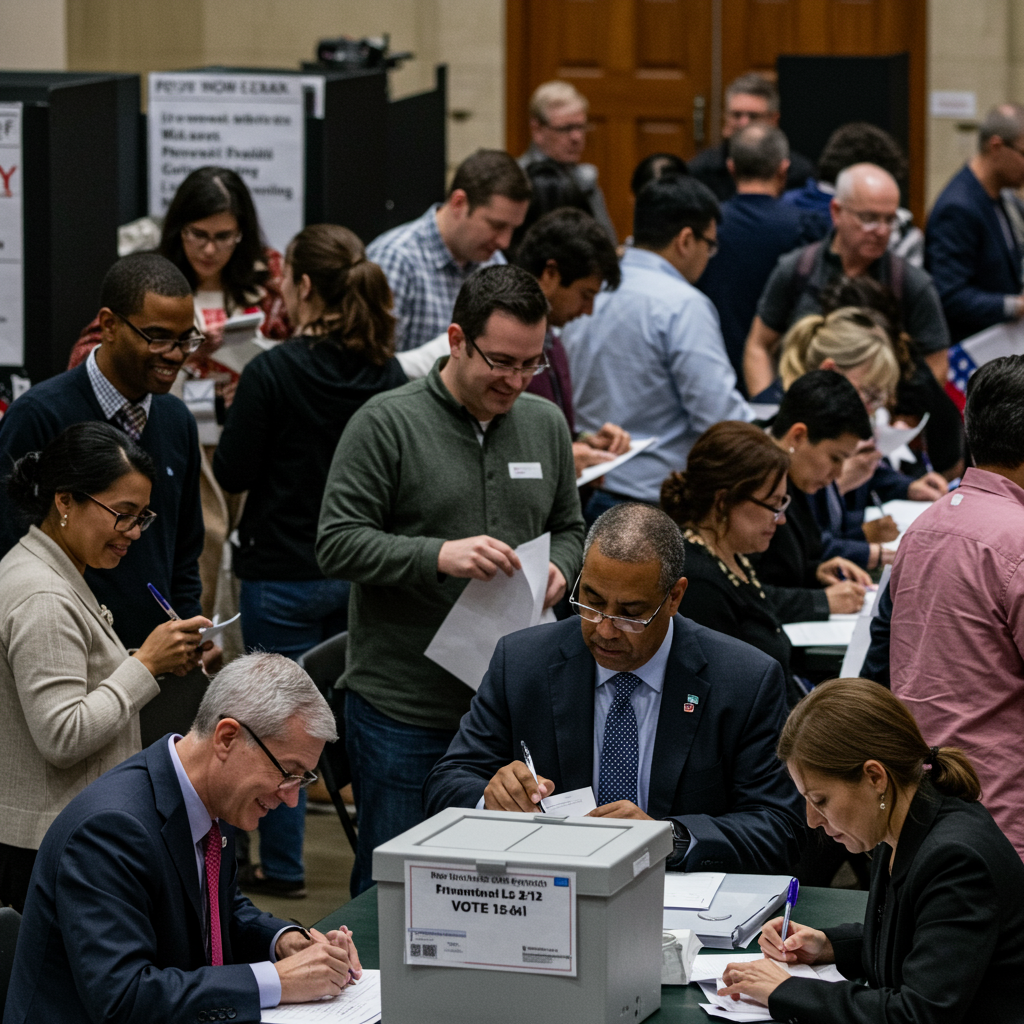President Donald Trump formally signed a sweeping domestic policy bill into law on Friday, July 4, 2025, during a patriotic ceremony at the White House. Dubbed the “Big beautiful Bill” by the administration, the legislation represents a significant policy achievement for the President’s second term. The signing event, held on the South Lawn and featuring a military picnic and flyovers, brought together republican lawmakers instrumental in the bill’s narrow passage. This comprehensive package includes major changes to tax law, federal spending, and social safety net programs, while also raising the national debt ceiling.
A Ceremonial Signing on Independence Day
The White House ceremony on July 4th was framed as a celebration of this legislative victory. President Trump presented the bill as a fulfillment of key campaign promises. He asserted it would spur economic growth and strengthen national security. The event included symbolic elements, like flyovers by military aircraft that recently participated in strikes on nuclear facilities. Prominent Republican leaders who helped shepherd the bill through Congress were in attendance, signaling the political weight of the signing.
Core Components of the Far-Reaching Bill
The “Big Beautiful Bill” is an extensive piece of legislation spanning 870 pages. It consolidates a diverse set of Republican priorities into a single budget package. Key provisions included within the law encompass:
Tax Provisions: Permanently extending the individual tax cuts originally enacted in 2017. Creating new tax breaks on tipped income, overtime pay, and allowing deductions for auto loan interest. Increasing the Child Tax Credit to $2,200 permanently and raising the State and Local Tax (SALT) deduction cap to $40,000 for five years.
Social Program Cuts: Implementing significant reductions to federal safety net programs. Notably, steep cuts to Medicaid spending and changes expected to introduce stricter work requirements. Also, expanding work requirements for the Supplemental Nutrition Assistance Program (SNAP), often referred to as food stamps. State governments with high payment error rates in SNAP will also be required to cover a portion of program costs.
Spending Increases: Allocating substantial new funding for the military and immigration enforcement initiatives. This includes billions specifically earmarked for border wall construction and expanding immigrant detention capacity. Significant resources are also directed toward hiring and training personnel for U.S. Immigration and Customs Enforcement (ICE).
Clean Energy Rollbacks: Largely terminating numerous tax incentives established by the 2022 Inflation Reduction Act. These incentives had supported clean energy projects, electric vehicle adoption, and consumer energy efficiency programs.
- Debt Ceiling Increase: Raising the national debt ceiling by $5 trillion. This figure exceeded the $4 trillion increase initially proposed in the House version.
- www.bbc.com
- www.nbcnews.com
- time.com
- www.cbsnews.com
- www.live5news.com
The bill’s proponents argue these measures are necessary to control government spending, curb perceived abuse in social programs, and bolster national defense and border security.
Navigating a Contentious Legislative Path
Passing the bill through Congress proved challenging, even with Republican majorities. The legislation was designed to pass without needing Democratic support that could be blocked by a Senate filibuster. However, it faced resistance within the Republican party itself.
The House of Representatives passed the bill by a narrow margin, 218-214. The vote was largely along party lines, with all Democrats voting against it. Only two Republican Representatives, Thomas Massie of Kentucky and Brian Fitzpatrick of Pennsylvania, opposed the measure. House Democrats attempted delays, with Minority Leader Hakeem Jeffries delivering a record-breaking speech lasting nearly nine hours in opposition.
Passage in the Senate was even tighter. The bill cleared the upper chamber by a single vote. Vice President JD Vance was required to cast the tie-breaking vote to secure its approval. Three Republican Senators withheld their support before Vance’s vote. The process involved intense negotiation and direct involvement from President Trump and Vice President Vance through late-night calls.
The political pressure surrounding the vote had repercussions. North Carolina Republican Senator Thom Tillis announced his decision not to seek reelection after opposing the bill. Representative Thomas Massie also reportedly faced targeting from Trump’s political operation following his vote against it.
Projected Impacts: Debt, Coverage, and Disparity
Independent analysis of the bill suggests significant long-term consequences for the national debt and social safety nets. The nonpartisan Congressional Budget Office (CBO) provided key projections.
The CBO estimates that the “Big Beautiful Bill” is projected to add a substantial $3.3 trillion to the national deficit over the next decade. While the administration claimed the tax cuts might initially create a first-year surplus, the CBO’s analysis indicated a sharp rise in the budget deficit afterward. Raising the debt ceiling by $5 trillion underscores the fiscal implications.
Furthermore, the CBO projects that the bill’s provisions, particularly changes to Medicaid, could lead to nearly 12 million people losing health insurance coverage over the next ten years. Changes to SNAP, including expanded work requirements, have also raised concerns about access to food assistance for vulnerable populations.
Critics argue the bill disproportionately benefits wealthier Americans. Analysis by the Tax Policy Center estimated that roughly 60% of the benefits from the tax changes would accrue to individuals making above $217,000 annually. Democrats have vehemently opposed the legislation, labeling it an “extraordinary assault on the healthcare of the American people” and even a “crime scene.” They contend it’s a giveaway to the wealthy that harms lower-income citizens by jeopardizing their healthcare, food assistance, and financial stability. User comments on news reports also heavily criticized the bill, focusing on its perceived negative impact on Medicaid and contributing to the national debt.
The bill effectively rolls back elements of previous Democratic administrations’ agendas. This includes aspects of the Affordable Care Act’s Medicaid expansion and the clean energy tax credits from the Inflation Reduction Act.
Public Opinion and Political Future
Public polling conducted before the bill’s passage indicated low public support. A Quinnipiac University survey showed only 29% of voters supporting the legislation, while significantly more opposed it. Support was notably higher among Republicans, with about two-thirds endorsing the bill. Other polling suggested that while specific provisions like the Child Tax Credit increase and eliminating taxes on tips had public support, there was majority opposition to reducing food assistance and spending on migrant detention centers. Approximately 60% of those polled found the projected $3 trillion-plus increase in the national debt “unacceptable.” Reports also suggested low awareness of the bill’s details among some Trump supporters.
Despite the mixed public reception, experts believe the bill’s passage strengthens President Trump’s position within the Republican Party. Some analysts view it as a test of his control over the GOP, which he appears to have passed. Longtime Republican pollster Whit Ayres described Trump’s control over his party as “close to total.”
Democrats have signaled their strong intent to make the “Big Beautiful Bill” a central campaign issue. They plan to use it extensively during the 2026 midterm elections, aiming to regain control of Congress by highlighting its controversial elements and perceived negative impacts on everyday Americans.
While seen as a major political win for the President, the long-term political consequences as the public grapples with the bill’s effects remain uncertain. Vice President Vance suggested the administration might be open to future adjustments to the law based on how its policies play out.
Frequently Asked Questions
What specific federal programs face funding cuts under the “Big Beautiful Bill”?
The bill enacts significant spending reductions targeting federal safety net programs. Key programs facing substantial cuts include Medicaid, the joint federal and state healthcare program for low-income individuals and those with disabilities. The Supplemental Nutrition Assistance Program (SNAP), providing food assistance, also faces reductions and expanded work requirements. Additionally, numerous tax incentives for clean energy, electric vehicles, and energy efficiency introduced under the Inflation Reduction Act are largely terminated.
What are the estimated financial impacts of this new legislation on the U.S.?
According to analysis from the nonpartisan Congressional Budget Office (CBO), the “Big Beautiful Bill” is projected to significantly increase the national debt. The CBO estimates the package will add approximately $3.3 trillion to the national deficit over the next decade. Furthermore, the bill raises the national debt ceiling by $5 trillion. The CBO also projected that provisions, particularly changes to Medicaid eligibility and work requirements, could result in nearly 12 million Americans losing health insurance coverage over the next ten years.
Which members of Congress voted against the “Big Beautiful Bill”?
Passage of the bill was contentious and largely along party lines. All Democrats in both the House of Representatives and the Senate voted against the legislation. In the House, two Republican Representatives, Thomas Massie of Kentucky and Brian Fitzpatrick of Pennsylvania, also voted no. In the Senate, three Republican Senators initially withheld support, and Vice President JD Vance was required to cast a tie-breaking vote for the bill to pass.
Conclusion
President Trump’s signing of the “Big Beautiful Bill” marks the enactment of a comprehensive and controversial package of tax cuts, spending changes, and social program reforms. Celebrated by the administration as a historic achievement fulfilling campaign promises, the law faced a difficult path through Congress and has drawn sharp criticism from Democrats and various analysts. While proponents highlight tax relief and increased funding for defense and border security, opponents point to projections of massive increases in the national debt and significant cuts to programs like Medicaid and SNAP, impacting millions of Americans. As the provisions of this sweeping legislation take effect, its actual impact on the U.S. economy, healthcare landscape, and social fabric will become clearer, undoubtedly shaping political discourse and becoming a key battleground issue in future elections.
Word Count Check: 1164



